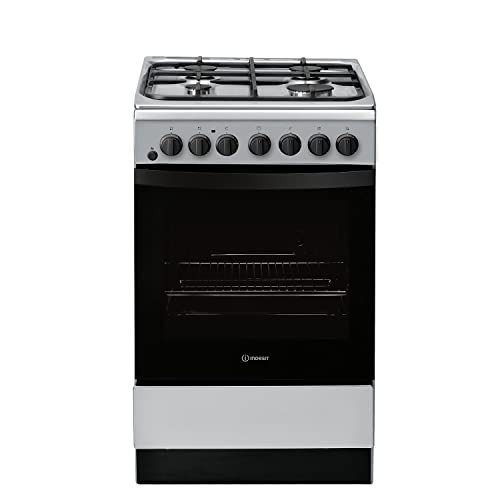Meet Your Fellow Oven Hobs Enthusiasts. Steve Jobs Of The Oven Hobs Industry

The Essential Guide to Oven Hobs: Selecting the Right One for Your Kitchen
When it pertains to home cooking, couple of devices are as vital as the oven hob. This flexible tool is necessary for a range of cooking techniques-- boiling, frying, simmering, and sautéing. Provided the myriad of choices offered on the market, selecting the ideal oven hob for one's kitchen can be intimidating. This article intends to provide an extensive take a look at oven hobs, discussing their types, performances, benefits, drawbacks, and crucial considerations when purchasing one.
Understanding Oven Hobs
Oven hobs, frequently understood as cooktops, are flat cooking platforms that include burners or heating elements. They can be integrated with an oven or stand-alone. The choice of an oven hob can significantly affect cooking performance and benefit.
Kinds Of Oven Hobs
Oven hobs can be found in numerous types, each with distinct functions. Below are the most common types readily available:
| Type | Description | Advantages | Downsides |
|---|---|---|---|
| Gas Hobs | Uses natural gas or propane | Instant heat and exact temperature level control; works well with all pots and pans | Needs a gas connection; less energy-efficient than electric |
| Electric Hobs | Usage electric coils or glowing heat | Easy to clean; constant heat distribution | Slower to warm up; can be less responsive than gas |
| Induction Hobs | Utilizes electromagnetic fields to heat cookware directly | Quick cooking; energy-efficient; easy to clean | Requires suitable pots and pans; usually more costly |
| Ceramic Hobs | Flat glass-ceramic surface area with radiant heat | Visually pleasing; easy to clean | Can be susceptible to scratching; slower to heat than induction |
Key Features of Oven Hobs
When selecting an oven hob, numerous features must be considered:
- Size & & Configuration: Available in different sizes, oven hobs can accommodate several pots and pans. Standard choices are generally 30, 36, or 48 inches wide.
- Power Output: Look for hobs with varying power levels for different cooking processes. High-powered burners are exceptional for boiling, while lower-power ones can be utilized for simmering.
- Control Types: Choose between knob controls and touch controls. Knobs provide tactile feedback, while touch controls use sleek styles and additional performances.
- Security Features: Options like automatic shut-off, child locks, and flame failure devices are important for avoiding mishaps.
- Relieve of Cleaning: Choose models with smooth surface areas or removable parts for simple upkeep.
Benefits and Disadvantages
Understanding the advantages and disadvantages of various oven hobs can help in making an informed choice.
Advantages
- Versatility: Suitable for numerous cooking methods, from boiling to frying.
- Speed: Many hobs heat rapidly, specifically induction designs.
- Energy Efficiency: Some options, like induction hobs, can decrease energy intake compared to conventional approaches.
Downsides
- Expense: High-end designs, especially induction hobs, can be pricey.
- Setup: Gas hobs need expert setup and a gas supply, which might incur extra costs.
- Compatibility: Not all cookware deals with induction hobs, demanding additional purchases.
Buying Considerations
When choosing an oven hob, think about the following elements:
- Cooking Style: Assess how frequently and what kind of cooking you do to figure out the best hob type.
- Kitchen Layout: Measure your kitchen space to ensure the hob fits and matches other home appliances.
- Spending plan: Determine how much you are willing to invest. Factor in installation and the expense of any necessary cookware.
- Energy Source: Evaluate the availability of natural gas or the electrical capacity of your kitchen to choose between gas and electric options.
FAQs About Oven Hobs
Q1: What is the distinction between a cooktop and an oven hob?A cooktop and an oven hob usually refer to the very same appliance. Nevertheless,"cooktop "is a more comprehensive term that includes both standalone hobs and integrated units with ovens. Q2: Can I utilize any pots and pans on an induction
hob?No, induction hobs require ferrous( magnetic)cookware
to work. Cookware made from material like stainless-steel or cast iron is ideal, while aluminum and copper without magnetic residential or commercial properties are not. Q3: How do I clean my oven hob properly?Cleaning techniques depend on the type of hob.
Usually, a damp cloth and moderate detergent work for glass-ceramic surfaces, while a specific hob cleaner is perfect for induction. Gas hobs need taking apart burners for thorough cleaning. Q4: Are induction hobs safe for cooking?Yes, induction hobs are typically more secure than gas hobs as they do not produce an open flame,and the surface area cools off rapidly. A lot of models also feature child security locks. Hobs Sale : How frequently ought to I change my oven hob?The life expectancy of an oven hob varies based on the type and use. Generally, they last around 10 to 15 years.
Routine maintenance can help extend this period. Picking the ideal oven hob for your home can considerably boost your cooking experience. With an extensive understanding of the types, features, advantages, and considerations, anybody can make an informed option. From the high heat of gas to the performance of induction, there is a hob matched to every cooking need. Eventually, the best oven hob can change cooking from an ordinary job into an art form, making it possible for cooking lovers to develop tasty meals with ease.

